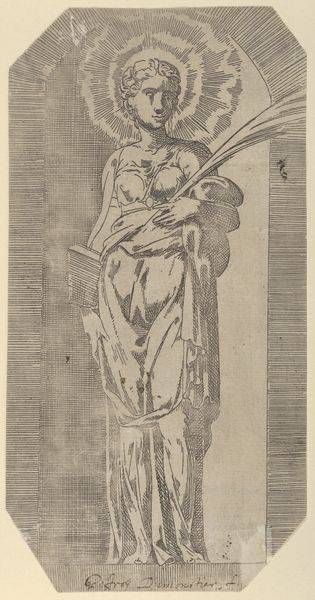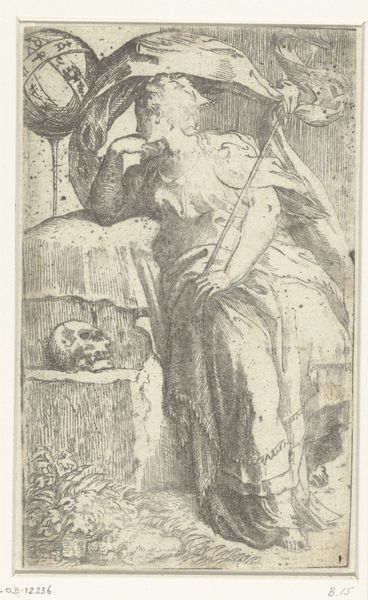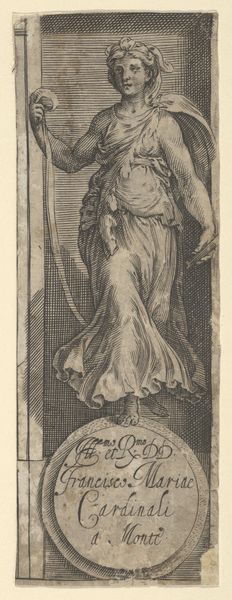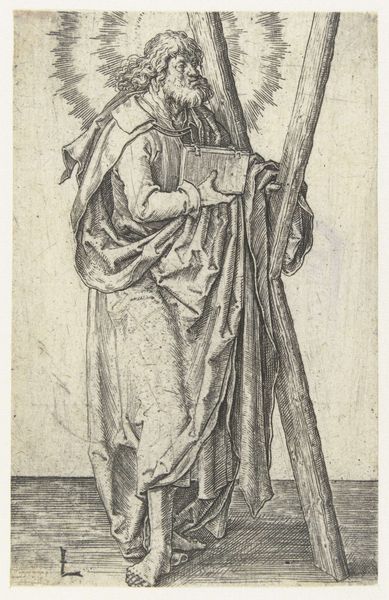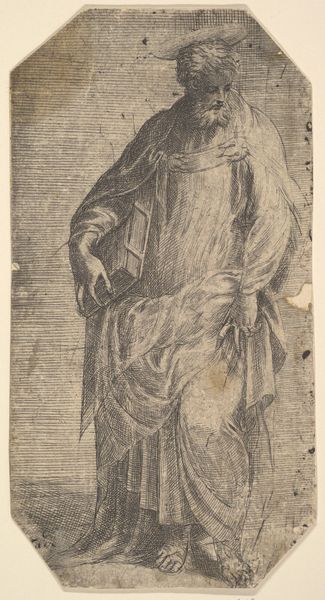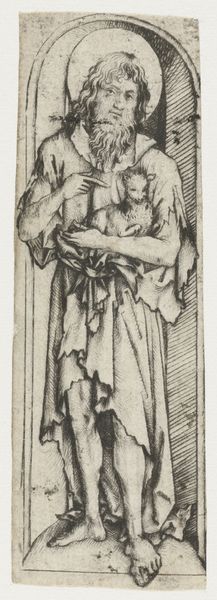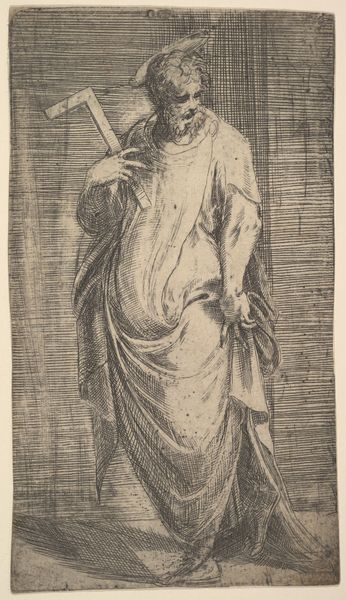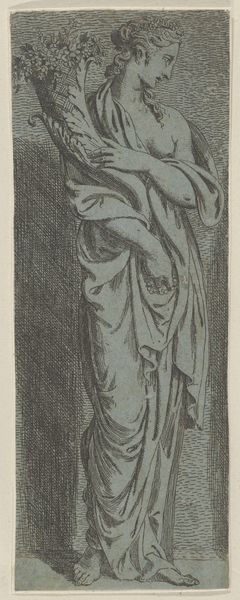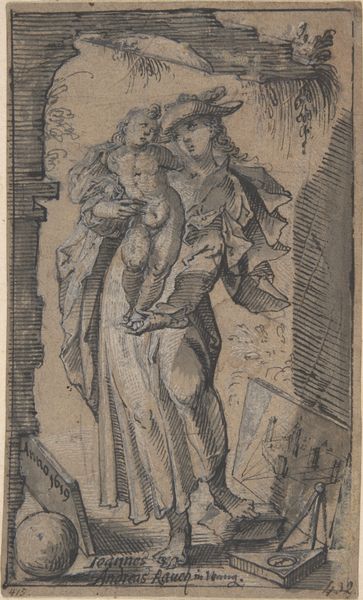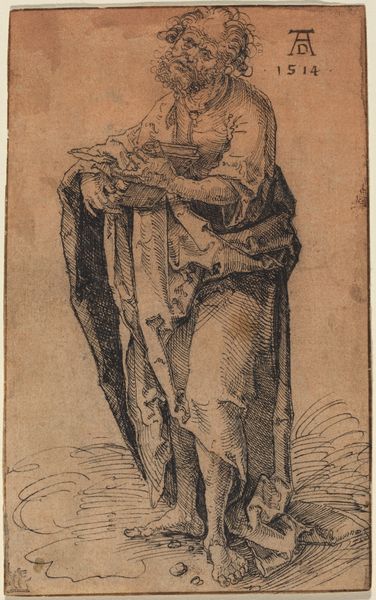
drawing, print, engraving
#
drawing
# print
#
old engraving style
#
figuration
#
madonna
#
personal sketchbook
#
child
#
sketchbook drawing
#
italian-renaissance
#
engraving
Dimensions: Sheet: 8 7/8 x 4 15/16 in. (22.5 x 12.5 cm)
Copyright: Public Domain
Curator: This Geoffroy Dumonstier engraving, “Virgin and Child in a Niche,” created sometime between 1520 and 1573, presents us with a Renaissance vision of maternal serenity. Editor: My first impression is how remarkably modern it feels. The composition is stark, the lines almost… graphic. It’s an image stripped down to its purest essence, focusing on the relationship between mother and child, devoid of excess ornamentation. Curator: It’s interesting you mention the sense of modernity. Dumonstier, while working within a religious framework dictated by his socio-political environment, really captures something fundamental about idealized motherhood through the Madonna's figure. The niche, a kind of stage, amplifies her significance, reflecting her integral public role at the time, especially in royal French imagery. Editor: The detail in the folds of her garment contrasts beautifully with the starkness you're referring to. They seem almost like rivulets of paint frozen mid-flow. I feel a sense of calm radiating from the piece, though, wouldn't you agree? There is nothing inherently revolutionary at play here, but the tender, sweet simplicity moves me beyond period constraints. It is an exploration into my own idea of mothering, with all its failures, fragility, and triumphs. Curator: Absolutely, the serenity speaks volumes. The technical skill Dumonstier demonstrates transforms the political message into something profoundly emotional, that echoes in all eras and speaks to individual introspection. This, despite how idealized or even propagandistic Marian imageries tended to be then. And while we may not immediately grasp the intricacies of the engraving technique, the meticulousness speaks to a particular culture of display. Editor: Thinking of the artist sketching alone in their atelier, trying to distill these great social forces into the lines of the Madonna's hands… it is fascinating how a humble artistic project comes to both transcend and signify complex historical tensions. I find myself questioning whether those are as resolved as they may seem to the general audience today. Curator: I agree—a single artwork carries such diverse potential, bridging historical context and intimate engagement in truly compelling ways. Editor: I am walking away, again pondering the myriad meanings an image accumulates over time, reflecting and shaping cultural attitudes and belief, echoing through centuries.
Comments
No comments
Be the first to comment and join the conversation on the ultimate creative platform.
